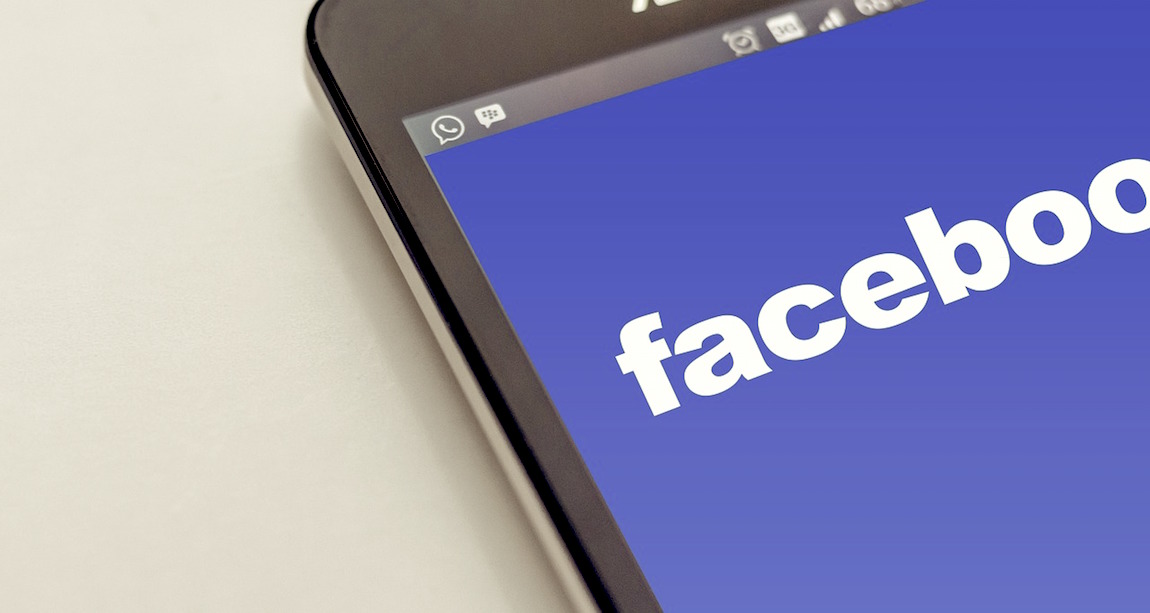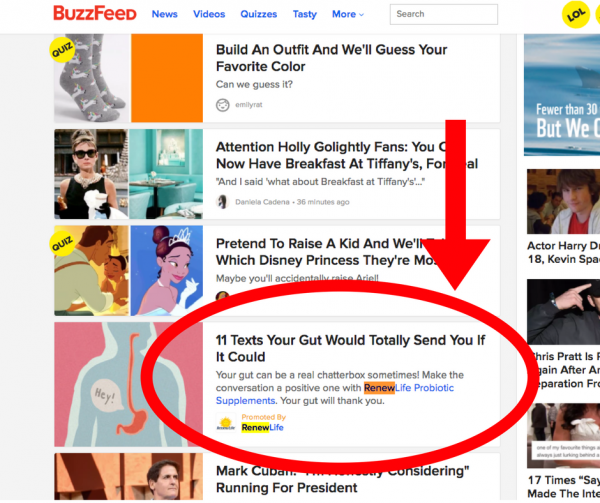Marketing in Camouflage: Native Advertising for Manufacturers
by Emily Swet
Native advertising for manufacturing brands can be a mighty tool in your marketing arsenal. And with native predicted to drive 74% of ad revenue by 2021, it’s worthy of consideration. Let’s take a closer look at the basics of native advertising to see if it’s a good fit for your manufacturing brand.
First, What Is Native Advertising?
Native advertising is an ad format that looks like the editorial content around it. It’s different from content marketing, which is unpaid and lives on your website and social channels. Instead, native ads are paid placements in publications (or their online counterparts) that offer other value to your customers.
Isn’t That Just a Fancy Word for an Advertorial?
Advertorials are similar: longer-form ads written in an editorial style to evoke the same experience as a publication they are placed in. You’ve likely heard of them – they’ve been around since the 1940s (and are the precursor to today’s infomercial). Advertorials are generally much more promotional. They usually focus on the benefits of the product/service being offered and often push to sell.
In contrast, native ads usually focus on highly targeted content from which the reader can gain value. There is less emphasis on the product behind the article, and no sales pitch. Brands gain value in return by positioning themselves as thought leaders in their industry, building trust and brand affinity.
What Are the Benefits?
- They Are Appealing. Consumers view native advertising more often then banner ads.
- They Are Empowering. When done correctly, native ads give prospects the power to find solutions to their problems.
- The Leads Are Good. Because the content is relevant and highly targeted, you get more high-quality leads. This is particularly true if you are putting native ads on the sites of niche trade publications.
What Are the Drawbacks?
- Scalability. Producing native ads can be demanding. Each ad needs to look and sound like part of its environment. That means you risk authenticity or value, especially under a deadline, if you push for quantity.
- It can be perceived as deceptive. People don’t want to be tricked. There’s a delicate balance: your content must flow naturally with the publication. But you also can’t leave your reader feeling betrayed when they notice it’s sponsored. Your content should be relevant and insightful or useful in some way.
- One bad apple spoils the bunch. There are plenty of brands creating native ads that are simply too promotional. This makes some consumers leery of native ads in general. But according to Forbes, standards for native are set to increase, making it necessary for advertisers to follow rules and regulations.
What Does This Mean for Your Brand?
To conclude, native advertising can fall right in your prospect’s wheelhouse – if it’s done right. Offer something useful to your buyer from the outset, and you’ll build loyalty and name recognition. (And pull them into your sales funnel.) But like any kind of advertising, native ads require expertise, testing, and evaluation to monitor your success rates.
Continue Reading5 Marketing Tips Manufacturers Can Take from Steve Jobs
by MGB2B
Whether you loved him or loathed him, Steve Jobs knew a whole lot about marketing. He wasn’t a brilliant engineer. That was his buddy, Woz. But Jobs knew how to sell the brilliance. How to package it, how to market it, and how to stay ahead of the competition in ways that the CEO of any manufacturing company would envy.
After all, isn’t that what keeps you up at night? That burning question: How can I keep up with – and surpass – my competitors? As I’m reading the Steve Jobs biography, it’s easy to see that Jobs was a master at this. Sure, he had his failures. But his successes were far greater.
Here Are 5 Marketing Tips for Manufacturers That We Can Gather from Jobs’s Time as the Face of Apple:
- Put Innovation Ahead of Money. While he was referring to his use of LSD when he said it, Steve Jobs famously declared, “It reinforced my sense of what was important — creating great things instead of making money.” It seems elemental, but in the hot pursuit of the almighty dollar, creativity often gets lost. Don’t lose sight of what ultimately drives business – creatively solving the problems of your customers.
- Think Different. While this was a longstanding tagline for Apple products, it perfectly embodies the Jobs philosophy. You can read anywhere that he stole the idea of a Graphical User Interface (as opposed to green characters on a black screen) from Xerox. But that’s only half of the story. Jobs and his team thought differently than the folks at Xerox PARC. They took something that was designed for businesses and made it a seamless, friendly, intuitive experience for the consumer market. In doing so, Apple eventually attracted different kinds of businesses from what Xerox was pursuing. Design-focused companies like ad agencies and architecture firms were an easy match for the Mac’s simple yet graphically advanced platform.
- Get Inside the Heads of Your Customers. Like the design of products, the design of your ad campaigns, web content, and any brand communications should be created with your consumer in mind. You want them to know your features. They just want to know what they’ll gain. But they also want to trust your brand. They want to feel like you know what their day has been like. Like you can offer them something to make it better or easier in some way. Jobs knew this. And almost every decision he made – whether for marketing or product development – was driven by it. Today, there’s an easy way to use your customers’ desires and needs to drive your decisions. A core user study. Smart engineers do them. Smart marketers do them. And smart CEOs live and breathe by their results.
- Don’t Be Everything to Everyone. Apple is for dreamers. For creators. For people who want to make change. That’s how they positioned the brand in 1997. The legacy that Steve Jobs created stands true even today. And it applies to both products and advertising. Focus on what you’re best at instead of adding mediocrity into the mix. Keep your message on-point. Don’t sully it with unnecessary excess. Simplicity is the name of the game.
- Know Your Enemies. And your friends. Apple’s relationship with Microsoft was on-and-off over the years. And even when Microsoft succeeded, Jobs knew what Apple’s reaction would be and how their products would be different. As mentioned earlier, he kept an eye on what Xerox was doing, and used what he learned from them to create the interfaces we now use every day. Don’t copy your competitors. But know and understand what they are doing, so you can rise above them.
Steve Jobs had many flaws, for sure. But his product development and marketing instincts have changed the way we live today. Manufacturing companies would benefit from any one of these tips. Take them all together, and you might just find inspiration to revolutionize your industry. That sounds a whole lot better than simply “increasing the bottom line.”
Continue Reading


